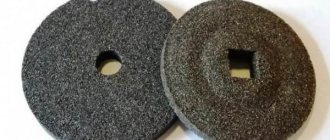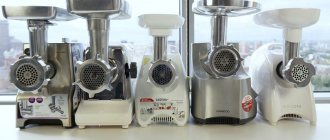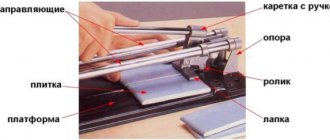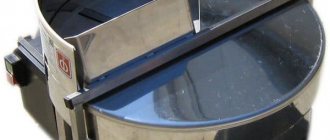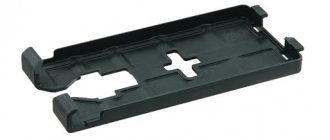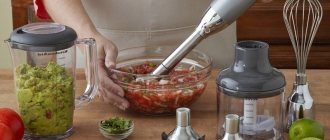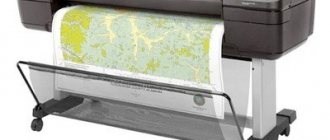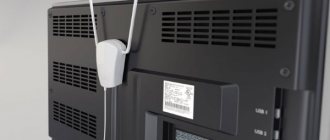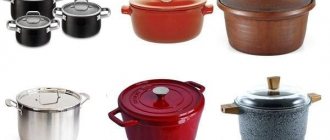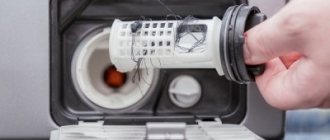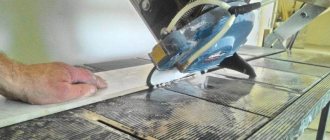A knife is used to cut up food, remove skins from killed animals, cut soft materials, and much more. However, over time, the cutting edge becomes unusable. To restore its sharpness, it is necessary to carry out processing. Sharpening knives is a separate technological process that is easy to do yourself.
Knife with sharpening stone
Main types of blades
Before you start learning how to sharpen blades, you need to know what types of blades there are. Different types of steel have some nuances:
- Carbon steel. The material is an alloy of carbon and iron. They are easy to sharpen and maintain their sharpness for a long time. People are attracted by the affordable price. Tools made from this material quickly rust in an acidic environment.
- Low carbon stainless steel. They are a compound of chromium, iron, carbon. Compared to carbon steel, this material dulls quickly due to its low hardness. The main advantage of stainless steel is its resistance to rust formation.
- Damascus steel. Blades made of this material are multi-layered products that have an unusual pattern on their surface.
- High carbon stainless steel. High carbon content, plus the addition of molybdenum and vanadium make this material more durable than conventional stainless steel. The products dull slowly and are protected from corrosion.
Ceramic blades belong to a separate group. This material has a high sharpness from the factory, which does not dull over a long period of time. However, ceramic tools are fragile and are not resistant to strong impacts, falls, or the application of breaking force.
Why does the blade become dull?
There are a number of factors that influence the process of dulling a cutting edge:
- Excessive force transmitted to the tool when cutting. This causes the blade to bend.
- Incorrect turning process.
- Cutting hard materials.
- Improper storage.
- Impacts against metal objects.
- Destruction of metal due to corrosion.
Blacksmiths do not recommend washing knives under hot water. This is due to the fact that the metal is affected by aggressive salts, which reduce the sharpness.
How to determine the sharpening angle?
To restore the sharpness of the blade, you need to know the sharpening angle of the knife. To do this, you can use hand tools and inquire about factory sharpening. Knife sharpening tables with standard indicators can be found on the Internet. There are two simple methods for determining the sharpening angle of knives without tables:
- Using scissors. To do this, the scissors are opened and the blade is placed between the open parts. The sides of the knife should be set at the same distance from the blades of the scissors. Readings are taken using a protractor.
- Using an angular ruler. This is a special device. Modern models are connected to computers that read accurate readings.
Masters use precision measuring instruments to read indicators. There are also special tables that help determine the angle when sharpening knives.
What sharpening angle is suitable for kitchen tools?
Tools used for cutting food are considered universal. The sharpening angle of a kitchen knife starts from 20 to 30 degrees. Thanks to this, they can cut products of different hardness equally efficiently. The exception is fillet cutting tools. Their sharpening angles range from 15 to 20 degrees.
Hunting
Tools used for hunting are subject to increased stress. Because of this, they are made from more durable materials. The angle for sharpening hunting knives is from 25 to 40 degrees.
Proper sharpening of a hunting knife
Basics and principles of knife sharpening
In order to restore the working sharpness of the blade, remove problems that have arisen and restore the original shape of the blade, you need to know how to sharpen knives correctly. To do this, three types of abrasive are sufficient - coarse, medium and fine.
It is necessary to place the blade on the sharpening tool at the desired angle (about 15-20o) and smoothly move the cutting part along its surface gradually, from the heel to the end of the tip. And for proper sharpening, you must comply with the following conditions:
- the edge of the blade at the moment of contact with the block should be perpendicular to the movement of the blade;
- leave the degree of inclination of the blade surface to the tool constant;
- keep the pressure on the tool neither too light nor too heavy. It is necessary to make uniform, moderately strong, smooth movements.
In order to maintain the optimal sharpening angle for a kitchen knife and to ensure that the movements remain strictly perpendicular, the handle when turning the edge should be slightly raised above the sharpener and pulled back slightly, slightly behind the tip.
Video: How to set the sharpening angle of a knife? Ideal sharpening angle.
The movements must be repeated 40-50 times until a burr appears on the opposite side. This indicates abrasion of excess metal. The double-sided blade must be turned over and the same steps performed.
When a second burr appears, continue the work with finer grinding, then properly fine-tune the finest burr.
Sharpening methods
Over time, knifemakers have brought the sharpening procedure to a special technological process, during which a variety of devices and techniques can be used. Knives can be sharpened both with hand tools and on industrial machines.
On the grinding wheel
Sharpening knives using a sharpening wheel is not recommended. This is due to the fact that few craftsmen can limit the cutting edge from overheating. Because of this, tempering of the steel may occur, after which the hardness of the material will decrease. You can sharpen a knife on a sharpening wheel only for large chips or serious damage that would take too long to correct manually.
On abrasive stones
Sharpening a knife is possible using abrasive stones. This is a classic method used by both professionals and amateurs. The grain size of the stones varies. Grains can be large, medium, small. With the help of abrasive stones, craftsmen remove any sharpening of the blades.
Sharpening devices
Sharpening a knife can be carried out using special mechanisms that facilitate this process. Mechanical sharpeners require human effort during the procedure. Expensive devices include automatic machines. With their help you can sharpen blades made of different steels.
Sandpaper or cloth
To correct small burrs and restore sharpness after working with a tool, you can use fine-grain sandpaper or a hard cloth. They are suitable for finishing sharpening knives and bringing the cutting edge to working condition.
Sharpening a knife with sandpaper
Knife sharpening technology on a block
The simplest device that any housewife can easily handle is an ordinary block. These can be two different touchstones or one with a combined coating.
Recommendations for choosing a device
The following points can be noted:
- there are no special requirements for the shape and width of the product;
- the length is chosen not shorter than the blade being sharpened (preferably 1.5-2 times longer);
- there should be no chips on the touchstone;
- if a combined bar is selected, then the proportional grain size should be 2:1.
For household knives, a universal, medium-fraction sharpening stone is quite suitable. If you can find a Soviet-made whetstone, it will be the best purchase - grains of the same size are applied to the stone, which ensures high-quality grinding.
Features of the technical process
Before starting work, the sharpener is moistened with water and left for 20 minutes. This will prevent small chips from clogging the voids between the grains.
The subsequent steps look like this:
- They begin work with coarse-grained whetstone. Choose a convenient position for the block - set it on a wooden board or place a towel under it. The unit can be held perpendicular to you or at an angle of 45 degrees. To maintain the desired sharpening angle, it is recommended to make paper blanks using the parameters from the table above.
- The knife is positioned across the whetstone so that the upper edge of the handle and the lower edge of the sharpening stone are at the same level.
- The working hand holds the handle, and the auxiliary hand holds the blade.
- With smooth movements and slight pressure, move the blade along the block, gradually shifting the position of the knife down from the sharpener.
- Having reached the bend of the blade, the handle is raised to maintain the desired sharpening angle.
- Turning the knife over to the other side, repeat all the described steps.
The movement of the blade should always be perpendicular to the edge of the product. During the process, it is necessary to wet the sharpener again to remove the suspension formed from friction. At the end of the work, they pass over the block again with a damp sponge to remove metal “scree”.
The next stage is finishing, for which fine-grained timber is used (or musat, if it is available on the farm). The grinding technology is identical to that described above. It is recommended (but not necessary) to complete this phase with a piece of leather with GOI abrasive paste applied to it.
After this, all that remains is to check the quality of sharpening on a sheet of paper or a fresh tomato. Confirmation that the work was done well will be the absence of glare when light is directed at the blade.
What to sharpen with?
Before you start restoring the sharpness of an edge, you need to familiarize yourself with all types of tools for work and their features. Not every device can sharpen a blade to working condition.
Sharpening stone
Sharpening stones, made from abrasive materials, are the most popular tools used for restoring cutting edges. Foreign companies indicate on the surface of the bars the number of abrasive grains per 1 square millimeter. There are stones with small, medium, and large grains on sale. With their help, you can perform both rough and finishing metal processing. Sharpening knives on sandpaper must be done carefully, making movements only in one direction.
Mechanical sharpener
Popular sharpeners that are purchased for sharpening kitchen knives. It is a structure that has two abrasive plates that are fixed at equal angles. It is enough to run the blade over them several times to restore sharpness. Cannot be used for sharpening special blades (hunting, sporting).
Electric sharpener
Expensive devices that are used for sharpening various blades. Allows you to achieve better results compared to mechanical sharpeners. This is due to the fact that this mechanism automatically selects the optimal sharpening angle.
Musat
A cylindrical file, sold separately, included with kitchen tools. Used to bring the cutting edge back to working condition after a short period of use with the blade. If there is serious damage to it, musat will not help.
Lansky sharpener
A special device that is used to restore sharpness to small blades. The main advantage of this sharpener is the ability to set any angles and maintain them throughout the working process. The sharpener is equipped with several bars for rough and finishing processing. The work is carried out manually.
Sharpening and grinding machines
In production, blades are often sharpened on machines. Using industrial equipment, you can accurately sharpen any tool. However, a master must operate the machines. This is due to the fact that the abrasive disc at high speeds can damage the cutting edge if moved incorrectly. We must not forget about cooling the metal during work.
Sharpening a knife on a machine
7-step instructions for sharpening and finishing a kitchen knife
So, in sharpening a knife, one goal is to remove enough metal from the blade so that the cutting edge becomes sharp again. You need to start work with a coarse-grained abrasive and finish with a fine-grained one.
It is important to remember the following principles of sharpening knives:
- The most important thing is to choose the optimal sharpening angle and maintain it along the entire cutting edge while sliding along the block.
- Movements should be smooth, without pressure.
- All bars must be moistened with water, or better yet, with a soap solution: before sharpening (so that the blade glides better and metal dust does not clog the pores), during the process (to remove the resulting suspension) and at the end, to clean the bar.
And one more important tip - the first time it’s better to practice on a knife that you don’t mind ruining. Especially if your main knife is too good and expensive. Well, let's start practicing.
Step 1. Rinse the stone with water, and then run over it, say, with a sponge with a drop of dishwashing liquid.
Step 2. Next, sit down at the table and place the stone on a wooden board, for example, a cutting board. You can place a towel under the stone. For some it is more convenient to place the block perpendicular to themselves, and for others at an angle of approximately 45 degrees. Over time, you will understand how it is more convenient for you to work.
Step 3. Now you need to decide on the sharpening angle and fix the position of the knife. What should the angle be? The general principle is that the smaller it is, the sharper the blade, and the larger it is, the longer the blade retains its sharpness.
- Regular kitchen knives are sharpened to an angle of 40-45 degrees. If you are sharpening a fillet knife (designed for cutting thin pieces of fish, poultry and meat), then you should sharpen it sharper - at an angle of 30-40 degrees. The selected value must be divided by 2, and then we will get the angle that should be between the blade and the surface of the block. That is, to sharpen a blade at 45 degrees, you need to sharpen each side at 22.5 degrees to the sharpening surface.
A simple technique shown in the photo below will help you fix the knife at an angle of 22.5 degrees.
- Remember, you should try to stick to the chosen angle throughout the entire work.
Step 4. Place the knife across the block so that the upper edge of the handle is above the lower edge of the stone. Holding the handle with one hand and the blade with the other, we begin to slide along the block away from ourselves along the trajectory shown in the picture below.
Watch a short and clear video:
- The point is that the cutting edge sliding along the stone should always be perpendicular to the direction of movement.
- At the bend of the blade, the knife handle needs to be slightly raised to maintain the selected angle.
- Remember also that you can’t put pressure on the blade, but you shouldn’t give it any slack either.
Thus, you need to pass the blade along the stone about 40-50 times, namely until a “burr” (burr, microsaw) appears along the entire length of the cutting edge. Its appearance will tell you that the excess metal has worn out and there is no point in grinding further. Then you need to turn the blade over and repeat the same steps. Clearly in the video:
- A burr is a small roughness that is difficult to see, but can be felt by carefully running your finger along the edge of the blade (but not along the edge, so as not to cut yourself).
Burr of a sharpened knife
During operation, a suspension will appear on the blade - metal dust, which must be periodically washed off with water.
Step 5. So, the burrs have appeared, now we proceed to finishing. To do this, we repeat the same manipulations on a stone with half the grain size. An alternative finishing method is using musat.
- Musat is a steel rod of oval or round cross-section with longitudinal notches. It is only suitable for editing and maintaining sharpness, but not for sharpening a knife. It is recommended to edit the knife with musat every time before and after work.
How to sharpen a kitchen knife with musat can be seen in the following video master class from the respected knifemaker Gennady Prokopenkov, who, by the way, specializes in making kitchen knives.
Step 6. If desired, you can bring your knife to a razor sharpness. To do this, take any leather or leather belt, treat it with GOI, Dialux or any other abrasive paste, and then do the same steps, but only in the direction from the cutting edge.
Step 7. Finally, we check the quality of sharpening. This is done very simply. It is enough to cut a tomato or cut paper. If you wanted to achieve razor sharpness, then you should try to shave the hair on your arm. The sharpest knives can even cut hair, as shown in the photo below, but in the kitchen such sharpness is not required for the most ordinary knife.
How to sharpen at home?
Sharpening knives with your own hands requires a special approach. To do this, you need to select a device for the work, taking into account the material from which the blade is made. If there are no sharpening tools, you can restore the sharpness of the knife on the knife. To do this, you need to run a dull blade along the butt of another blade several times, performing planing movements. However, more serious sharpening can only be done with the help of special tools.
Another option for turning tools without abrasives is to use glass objects. Jars, bottles, glasses, and glass plates are suitable for this. Simply running the edge over the fragile material a few times will restore its sharpness.
How to sharpen kitchen knives correctly?
You can use different tools to sharpen kitchen knives. The most common ones include grinding stones, sharpening stones, and mechanical sharpeners. We will talk about how to sharpen a blade with an abrasive stone below. To sharpen a kitchen knife using a mechanical sharpener, you need to place it on a hole with abrasive plates and pull it toward you several times. Musat brings the blade to working condition. To do this, several movements are performed in one direction on each side of the blade.
How to sharpen on a sharpening machine?
To restore the sharpness of a tool using industrial equipment, you need to follow the sharpening rules:
- Use a disc with large grains to correct rough irregularities, chips, and large burrs. Finish the edge on the grinding wheel with small grains. If the blade is thin, you cannot use the disc for rough cutting.
- Sufficient rotation speed of the abrasive disc is up to 150 rpm.
- We must not forget about setting the exact angle for different types of blades. The parameters are indicated in special tables. Additional devices are used to maintain the angle.
- When processing, perform smooth movements so that the abrasive catches the metal along the entire length of the blade.
- Cool the steel during work. The master needs to water the metal with special oil or water.
- When working with the machine, use safety glasses to prevent metal filings from getting into your eyes.
Any sudden movement may damage the instrument. Even after proper work, the severity can quickly worsen. To prevent this from happening, you need to use the blade only for its intended purpose. Store in wooden stands, do not leave in water for a long time.
How to sharpen with a whetstone by hand?
Sharpening knives at home using an abrasive stone is a process performed in a certain sequence. You need to prepare water and abrasive stones in advance. Procedure:
- Place a stone with large grains on the table in front of you. It must be fixed motionless.
- Pour water over the block.
- Set the required angle between the metal and abrasive surface. To do this, you can use a leaf folded at the required angle.
- Perform movements along the block away from you so that the entire length of the edge is processed. The knife can only be moved in one direction.
After processing on a coarse-grained stone, change it to a block with small particles and repeat the procedure. During processing, wash off any metal shavings that appear with water. To make the instrument shine beautifully, its surface can be treated with GOI paste.
Proper sharpening of a knife with a whetstone
How to sharpen knives on a machine correctly
A sharpening machine is an electrical device with abrasive attachments that differ from each other in the size of the granular chips.
Before working on the sharpener, consider the following points:
- knife functionality;
- metal quality;
- sharpening angle;
- rotation speed of the nozzles.
Knife sharpening machine.
All points are interconnected. The value of the sharpening angle before polishing the object depends on the cases in which this or that tool is used:
- 10-17° – for thin tools (razors, scalpels). These items are treated only with fine-grained nozzles operating at reduced speed. With a minimum sharpening angle, the edge is the sharpest, but such objects become dull faster.
- 20-25° – for kitchen knives. Small tools with a thin blade can be irrevocably damaged by a rough abrasive wheel. In this case, a fine-grained disk with a low number of revolutions is used.
- 25-30° – for tourist and hunting blades, which are made of durable Damascus steel. Kitchen cleavers used for cutting meat and chopping bones are also sharpened at this angle.
- 30-40° - for rough tools, the use of which makes work in the garden easier, and for tools capable of cutting carpet, hoses, and cardboard.
On modern industrial sharpening machines there are no problems with maintaining the sharpening angle: the knife is inserted into special openings and secured. The fixed position allows you to sharpen the blade symmetrically on both sides.
It is difficult to measure the angle at home. Experts advise focusing on the width of the eyeliner (the size of the cut from the edge to the entire area). For kitchen blades it is 2-3 mm, for rough tools (an ax, scissors for gardening) - from 4 to 5 mm. If the knife is sharpened correctly, the eyeliner will be the same along its entire length.
On an emery machine
An electric sanding machine is a necessary thing in the household. Use it to sharpen any cutting objects. The kit includes abrasive discs with coarse and fine crumbs.
Sharpening knives on an emery-type sharpening machine follows the following algorithm:
- The blade is applied with its edge to the rotating coarse-grained disk from the side.
- The blade must be tilted to the required degree.
- Run the edge along the disc from the base of the handle to the tip, without changing the inclination or direction.
- The movements are repeated on the reverse side of the blade.
- The number of repetitions should be the same on both sides.
- You need to sharpen until burrs appear.
- The roughness is carefully removed.
- The blade is edited using a fine-grain attachment, alternately on each side.
To sharpen the tip evenly, you need to move it smoothly and without strong pressure along the side of the nozzle. If this is done slowly, the blade will overheat and the edge will become damaged.
On a machine with an abrasive wheel
A machine with an abrasive wheel, or grinder, is used for sharpening knives and tools, which allows amateur craftsmen to save on purchasing an electric sharpening machine.
To sharpen the blade, the grinder is strengthened with the disc facing up. During work, nozzles with medium and fine abrasives are alternately used. The sequence of actions is the same as when working on sandpaper.
It is important to take into account the rotation speed of the grinder’s nozzle, which reaches 11 thousand revolutions per minute at minimum power. Therefore, before you start sharpening, you need to understand the nuances and practice in the presence of an expert.
Methods for checking the blade tip
After carrying out the work, you need to check how sharp the blade is. Several methods are used for this.
On paper
Try to cut a sheet of paper while holding it with one hand. If you can do it without problems, the sharpening is good. A sharp blade will cut the sheet under its own weight.
On a tomato
Often the sharpness of kitchen blades is tested on tomatoes. If it is blunt, the vegetable will be crushed. You need to put it on the table in front of you, try to cut the tomato with the blade horizontally without holding it with your hand. A sharp blade will easily cut a vegetable.
Checking knife sharpening on tomatoes
Testing on hand hair
One of the testing methods that people often use after turning tools. To do this, the knife is pressed effortlessly against the skin of the hand. It should be easily passed through the hair. If the hairs are cut, the blade is sharp, suitable for various types of work.
Everyone uses knives. However, these tools become dull over time, making it impossible to work with them. To restore the sharpness of steel, you can use different devices. Taking into account the angles for different types of knives, you can carry out the work yourself.
